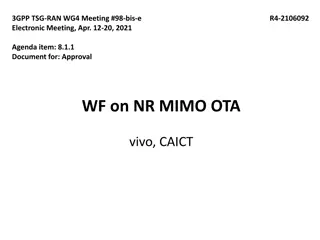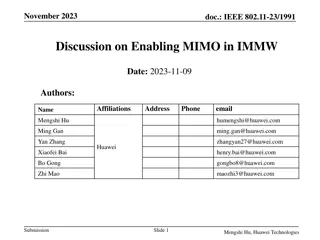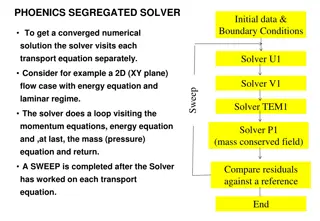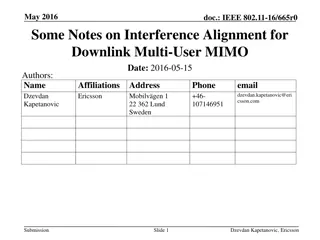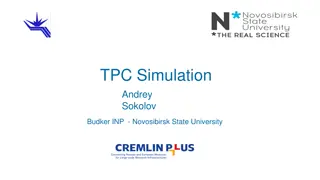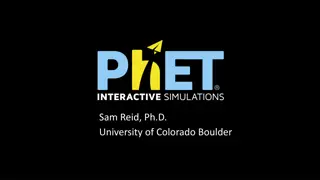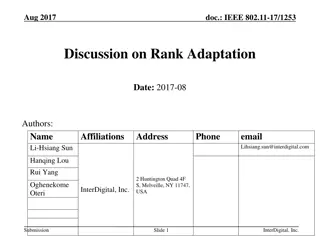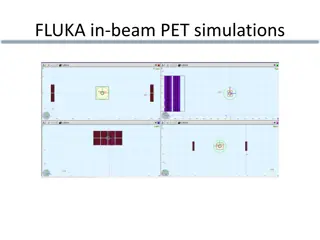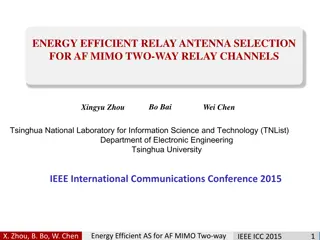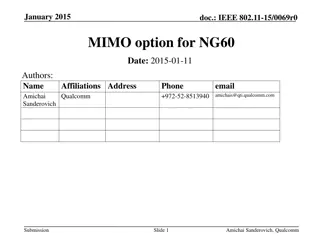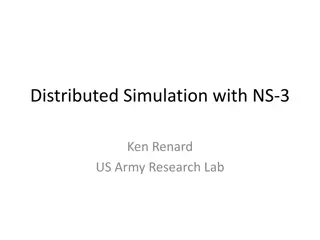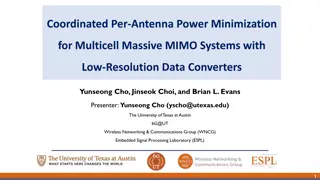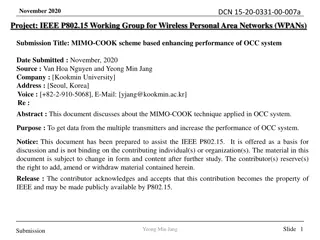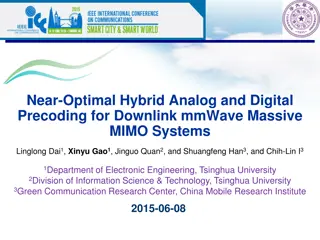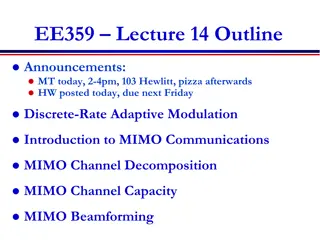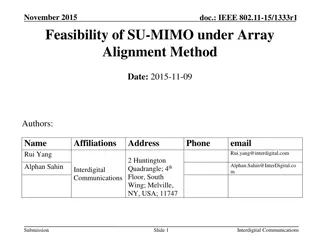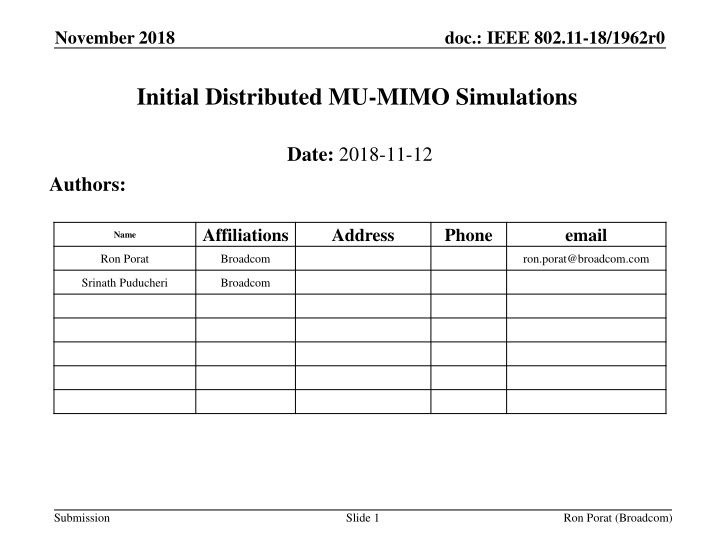
IEEE 802.11-18 Distributed MU-MIMO Simulations & Results
Explore the November 2018 document detailing the IEEE 802.11-18/1962r0 initial simulations on Distributed MU-MIMO operations. The study addresses synchronization challenges and proposes solutions for improving performance. Simulation methodologies, configurations, and results for 4-antenna AP setups are discussed, showcasing the potential benefits of this approach.
Download Presentation

Please find below an Image/Link to download the presentation.
The content on the website is provided AS IS for your information and personal use only. It may not be sold, licensed, or shared on other websites without obtaining consent from the author. If you encounter any issues during the download, it is possible that the publisher has removed the file from their server.
You are allowed to download the files provided on this website for personal or commercial use, subject to the condition that they are used lawfully. All files are the property of their respective owners.
The content on the website is provided AS IS for your information and personal use only. It may not be sold, licensed, or shared on other websites without obtaining consent from the author.
E N D
Presentation Transcript
November 2018 doc.: IEEE 802.11-18/1962r0 Initial Distributed MU-MIMO Simulations Date: 2018-11-12 Authors: Affiliations Address Phone email Name Ron Porat Broadcom ron.porat@broadcom.com Srinath Puducheri Broadcom Submission Slide 1 Ron Porat (Broadcom)
November 2018 doc.: IEEE 802.11-18/1962r0 Abstract In the September meeting contribution number 1439 we introduced a framework for distributed MU-MIMO operation using wireless synchronization techniques building on mechanisms that exist in 11ax. Problem reminder from the time of NDP (when channel feedback is collected) to the time of joint data transmission, each AP drifts based on its own (20ppm) clock and builds a relative phase offset. Proposed solution reminder a designated master AP sends slave triggers before the NDP and before joint data transmissions to enable phase drift estimation by the slave AP. In here we estimate the phase drift and show that the impact of the error on performance is very small. Other synchronization issues are not addressed in this contribution. Submission Slide 2 Ron Porat (Broadcom)
November 2018 doc.: IEEE 802.11-18/1962r0 Simulation Methodology We employ two sets of simulations the first simulation is used to estimate common phase error. The second simulation performs joint MU-MIMO transmission whereby each slave AP has phase offset in the amount of the residual estimation error relative to the master AP. Both sets of simulations use 11nB and BW=80MHz. Common phase errors are simulated across 1000 channel realizations using one beamformed 4x LTF In the joint MU-MIMO simulation each slave AP is assumed to have as input the same 10% worst residual phase error for all channel instantiations. We calculate average MU SINR per STA per spatial stream with and without impairments and plot them. Submission Slide 3 Ron Porat (Broadcom)
November 2018 doc.: IEEE 802.11-18/1962r0 Simulation Configurations We believe the vast majority of cases for mesh deployments will involve 4-antenna AP. Hence we focus on two configurations: Two 4-antenna AP (one master one slave) Four 4-antenna AP (one master three slaves) Each configuration is 75% loaded - 2 streams to three or six 2-antenna STA for a total of 6 or 12 streams In terms of SNR we have a 2D problem AP-AP SNR and STA-AP SNR. For simplicity we ran simulations assuming 2 fixed AP-AP SNR values 10 and 20 dB and varied the STA-AP SNR. We assume all STA have the same SNR to all AP. Submission Slide 4 Ron Porat (Broadcom)
November 2018 doc.: IEEE 802.11-18/1962r0 Results Two 4-ant AP Results Four 4-ant AP Results Submission Slide 5 Ron Porat (Broadcom)
November 2018 doc.: IEEE 802.11-18/1962r0 Summary Initial results demonstrate that phase estimation can overcome the errors due to independent slave AP clock drift to provide a synchronized initial state for a joint transmission Submission Slide 6 Ron Porat (Broadcom)



